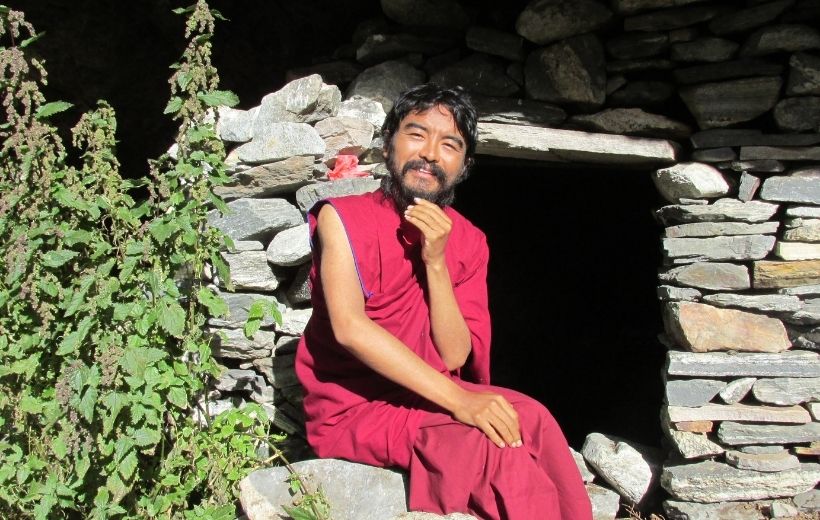The Benefits of Formal Meditation
By Yongey Mingyur Rinpoche • 5 min read
Some people get drowsy just thinking about spending time in seated meditation. Others find the concept of meditating in the middle of a rush-hour commute daunting, if not absurd. In truth, though, both formal (seated) and informal (active) meditation are equally important for a balanced, vibrant, and well-developed practice.

You can meditate informally anywhere, in literally any situation. It doesn’t matter how crowded your schedule is, because you can apply it in the middle of any task — at your workplace, running to catch a bus, chopping vegetables, presenting at a conference, even studying for an exam. Since awareness is the essence of meditation, you could be riding a unicycle across a tightrope and still be meditating! In fact, a practitioner get in the habit of bringing awareness to experiences that are “off the cushion.” Especially as a beginner, you’ll only be able to do it for brief moments at a time, but gradually those moments will become more frequent, with a longer duration.
But if it’s so great to meditate in the midst of daily life, why is formal meditation important? In part, it’s because it’s a lot harder to develop and deepen your meditation practice if you never carve out any time to dedicate to it. And the stillness of formal meditation provides a space to first practice apart from the hustle and bustle of life.. It does require time, which admittedly is a precious resource for many folks, but it doesn’t require a lot of it. Even a little bit of formal meditation, say fifteen or twenty minutes a day, is adequate. More is wonderful, of course, but it’s better to sit for a short period every day than it is to put off meditating for “when you have more time.”
“A disciplined mind invites true joy.”
– Mingyur Rinpoche –
Since you have to interact with the world in order to survive, you need the skill of maintaining awareness in ordinary life situations. If your meditation only ever happens on the cushion (or chair or sofa), when a real-life problem arises, you won’t know how to apply your practice. If your meditation is in one arena of your life, and the difficult situation is in another, and you won’t know how to bridge that gap. For best results, then, alternate formal and informal meditation. Fifteen or twenty minutes of formal, seated meditation a day to anchor and develop your practice, and then — since you can’t always be sitting on a cushion in a nice quiet room — plenty of informal meditation throughout the day. Repeat as necessary. . . ideally, throughout your life!
If you enjoyed reading our articles, please join our mailing list and we’ll send you our news and latest pieces.
Learn meditation under the skillful guidance of world-renowned teacher Yongey Mingyur Rinpoche at your own pace.

In his approach to teaching meditation, Mingyur Rinpoche integrates traditional Buddhist practice and philosophy with the current scientific understanding of the mind and mental health – making the practice of meditation relevant and accessible to students around the world. Mingyur Rinpoche is the author of the best-selling book The Joy of Living: Unlocking the Secret and Science of Happiness, as well as Joyful Wisdom: Embracing Change and Finding Freedom, In Love with the World: A Monk’s Journey Through the Bardos of Living and Dying, and many others.

Is meditation safe? Yes, as long as you have the right teachings. “it is literally impossible to block thoughts and emotions. The mind is like a river, always moving, constantly changing. If meditation instructions aren’t teaching you how to embrace that natural flow, then they are turning the flow into your enemy. Noise, distractions, restlessness,…

“A big highlight was going around Nepal and seeing all these incredible places that were dedicated monasteries, temples, shrines, and caves, where our great meditation ancestors practiced.” — Christopher Baxter

Ten years ago Mingyur Rinpoche returned from his wandering retreat. Hear from the Tergar Instructors about the magical week when Mingyur Rinpoche emerged from his four-and-a-half-year retreat.
If you enjoyed reading our articles, please join our mailing list and we’ll send you our news and latest pieces.